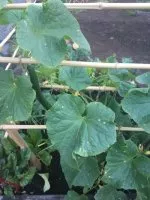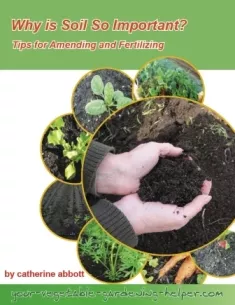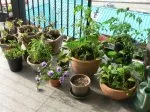Container Watering and Fertilizing
Container watering and fertilizing are very important as soil in containers can dry out very quickly. Growing vegetables in containers can be a rewarding endeavor, especially for those with limited garden space. However, to ensure healthy and productive plants, proper watering and fertilizing practices are crucial. Here’s an in-depth guide on how to water and fertilize vegetables grown in containers.
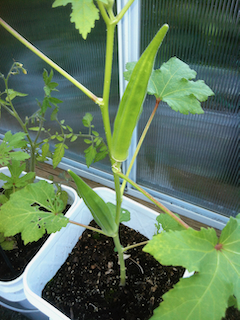 Okra growing in reused white pails
Okra growing in reused white pailsImportance of Proper Container Watering:
Water is essential for the health of container-grown vegetables. It facilitates nutrient uptake, maintains plant structure, and supports photosynthesis. However, container plants are more susceptible to drying out due to limited soil volume.
How often do I water?
While your plants are small and the weather is not too hot you may have to water only every 2 or 3 days. In the heat of the summer when your vegetable plants are mature daily watering will be probably be necessary. Keep the soil consistently moist but not waterlogged. Containers dry out faster than garden beds, so frequent monitoring is essential.
A good way to test if a container needs watering is to stick your finger a few inches into the soil, if it is moist it does not need water, if the soil is dry it needs watering. Also if a pot is small enough, lift it up to feel the weight. If it is light it needs watering. If the pot is heavy itself, try lifting it after watering to feel the weight, so you can judge what the weight is when the soil is moist.
How much do I water?
Give the container enough water each time so that the water runs out the drain holes. This ensures that the entire root system gets moisture. Watering frequency depends on factors like plant type, container size, weather, and soil mix. Typically, containers need daily watering, especially in hot weather.
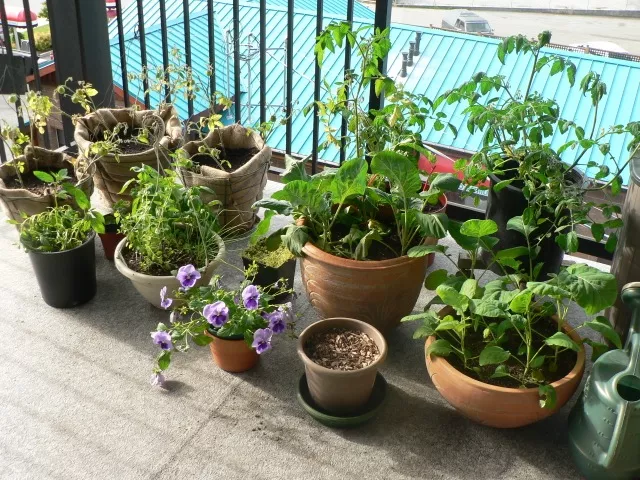 Variety of sizes for containers
Variety of sizes for containersWhat time of day is best for watering?
Water in the early morning to reduce evaporation and allow plants to absorb moisture before the heat of the day.
How can I slow down water loss?
Covering the soil in your container with moss, seaweed or newspaper will keep it more moist. The mulch will help to ensure the soil will not dry out as quickly from the sun and heat.
What if I want to leave for a few days, how can I keep my plants happy?
Make a small hole in the bottom of a large plastic bottle (milk jug or pop bottle) and place it into your container. The water will drip out slowly keeping your pot moist. I also try to move the containers to an area that they may get more shade so they will potentially need a little less moisture for the time you are away.
Signs of Overwatering
• Overwatering: Yellowing leaves, root rot, and mold growth.
• Underwatering: Wilting, dry soil, and brown leaf edges.
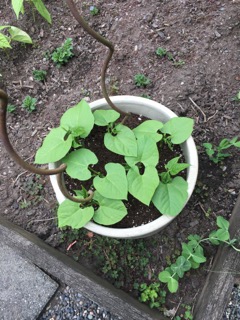 Growing cucumbers
Growing cucumbersImportance of Fertilization:
Container-grown vegetables rely on the nutrients provided in the potting mix and supplemental fertilizers. Regular fertilization is necessary because nutrients in containers are quickly depleted.
Types of Fertilizers
1. Granular Fertilizers: Slow-release formulas that provide a steady supply of nutrients over time.
2. Liquid Fertilizers: Quick-acting and easy to apply, ideal for regular feeding.
3. Organic Fertilizers: Derived from natural sources and improve soil health and structure.
Fertilizing Schedule
1. Initial Fertilization: Mix a balanced, slow-release fertilizer into the potting soil at planting time.
2. Ongoing Fertilization:
• Granular Fertilizers: Apply as directed on the package, usually every 4-6 weeks.
• Liquid Fertilizers: Apply every 2-4 weeks, depending on the nutrient needs of the plants.
• Organic Fertilizers: Follow the manufacturer’s instructions, often applied more frequently than synthetic options.
How to Apply
1. Granular Fertilizers: Spread evenly on the soil surface and water in well.
2. Liquid Fertilizers: Dilute according to the label instructions and apply directly to the soil or as a foliar spray.
3. Organic Fertilizers: Incorporate into the soil or apply as a top dressing.
Nutrient Deficiencies
Monitor plants for signs of nutrient deficiencies, such as:
• Nitrogen: Yellowing of older leaves.
• Phosphorus: Purple tinge on leaves.
• Potassium: Browning and curling of leaf edges.
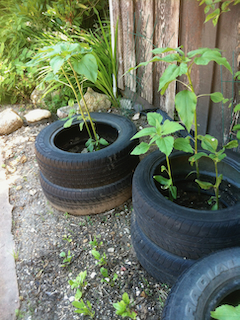 Potatoes growing in old tires
Potatoes growing in old tiresAdditional Tips:
• Container Size: Use larger containers to retain moisture longer and reduce the frequency of watering.
• Soil Mix: Choose a high-quality potting mix with good drainage and water retention properties.
• Mulching: Apply a layer of organic mulch on the soil surface to reduce evaporation and maintain moisture.
• Drainage: Ensure containers have drainage holes to prevent waterlogging and root rot.
By adhering to these container watering and fertilizing practices, you can ensure that your container-grown vegetables receive the right balance of moisture and nutrients for optimal growth and productivity.
Return from Container Watering to Container Vegetable Gardening
Recent Articles
-
Vegetable Gardening Frustrations: Lessons for a Better Harvest
Oct 29, 24 07:37 PM
Every vegetable gardener knows that while the rewards are sweet, the vegetable gardening frustrations can be a bit bitter. -
Small Space Vegetable Gardening
Sep 23, 24 05:06 PM
Small Space Vegetable Gardening - Tips for growing vegetables in small spaces. -
Why Fall Gardening?
Aug 16, 24 12:24 PM
Fall Gardening: A guide to a Bountiful Harvest.
